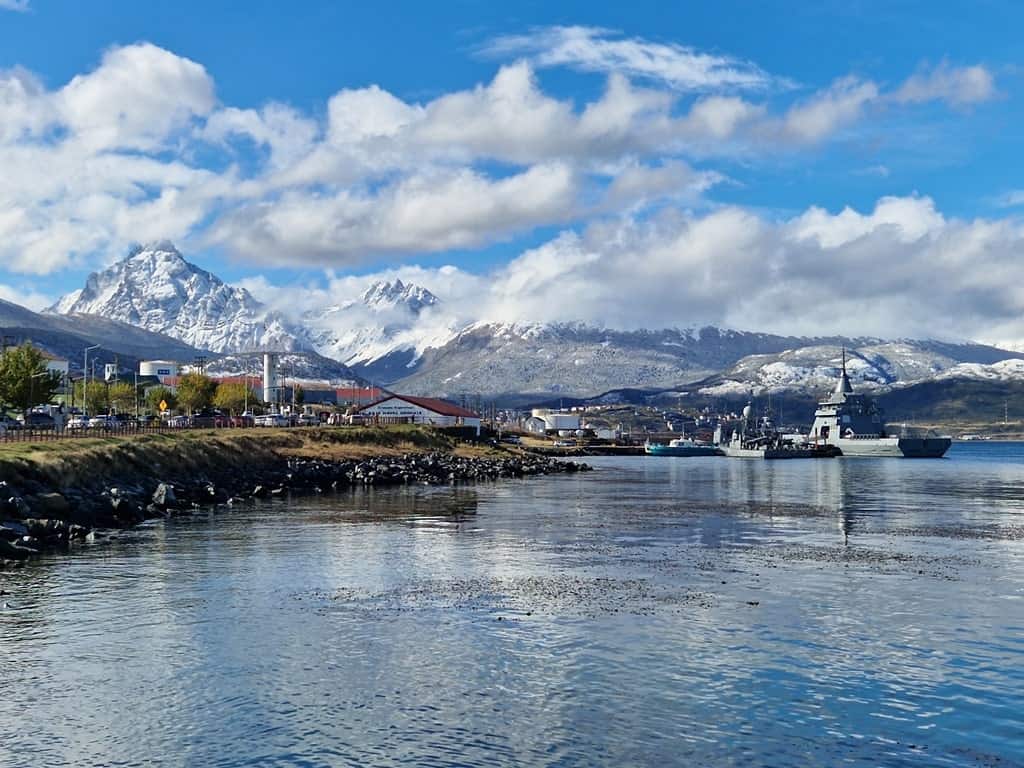Located on a curve of the Beagle Channel, Ushuaia is an urban area that’s home to around 70,000 people. A busy port and jumping-off point for adventures further afield, the city is made up of a mix of sloping streets, colorful old buildings, and mountain views.
Taking the title of the most southerly city on the planet, Ushuaia marks the point where the lofty peaks of the Andes connect with the Beagle Channel. Growing up as a frontier town that was developed by early pioneers, the only people who were daring enough to settle in the area were prisoners shipped there to carry out their punishment and people looking to start a new life on the edge of the world.
The inmates built the city brick by brick, constructing the port, hospitals, and railway stations. Today, Ushuaia is a magnet for Argentinians who are attracted there by job opportunities and an alternative way of life. But for visitors who make it to this remote enclave, Ushuaia offers an enticing mix of laid-back local life and plenty of outdoor adventures.

There’s enough to keep you in town for more than a few days. From the string of museums to local eateries, what brings most travelers to make the journey to this end of the country is the natural landscape. Day trips from Ushuaia include cruises to islands home to penguins, visits to glaciers, and hikes in the wilderness.
Here’s a guide to help you plan your trip to Ushuaia, including the best places to stay, how to get there, and a list of the best things to do in Ushuaia.
Disclaimer: This post contains affiliate links. This means that should you click on certain links, and then subsequently purchase a product, I will receive a small commission.
Table of Contents
How to get to Ushuaia
By plane
The main route into Ushuaia is by plane. Direct flights regularly leave daily from the Argentinian capital of Buenos Aires. On average, the price of a return ticket is $500. The frequency of flights increases in the summer season which runs between November to March. There’s also the option of taking the one-hour flight from Rio Gallegos.
The nearest airport to the city is the International Airport Malvinas Argentina which is located approximately 5 kilometres outside of Ushuaia.
Once you land at the airport, getting into Ushuaia usually means taking a taxi from the airport as there is no bus service. The taxi fare should cost around $7.
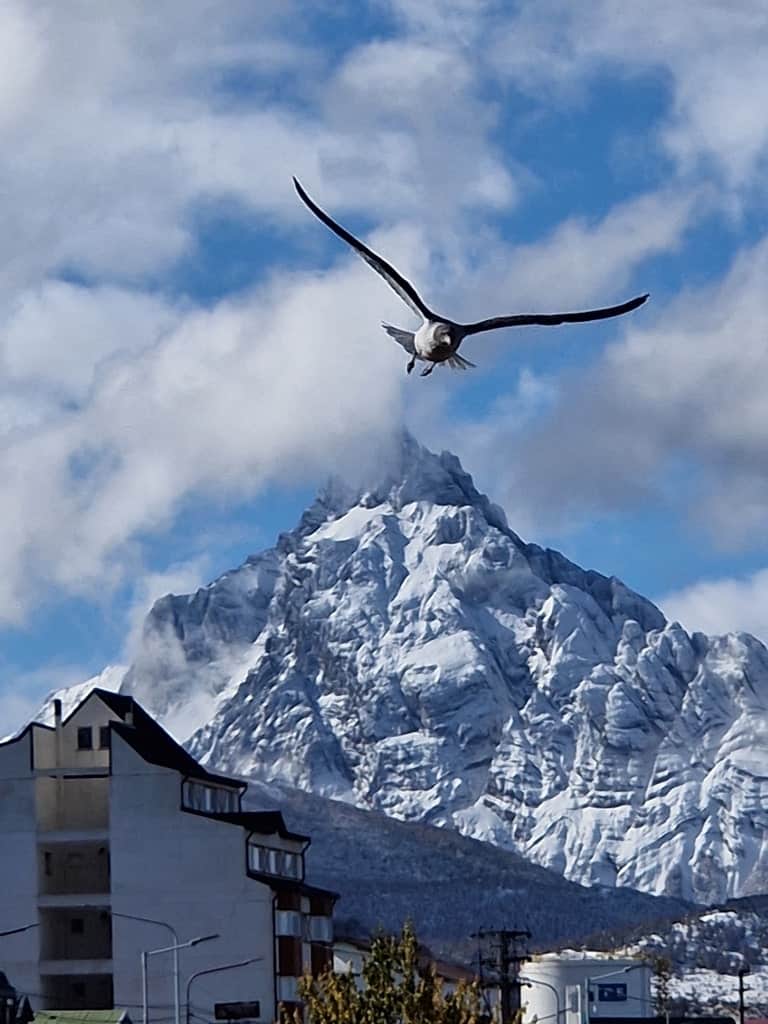
Where to stay in Ushuaia
Los Acebos Ushuaia Hotel: Located in a stunning location overlooking the beautiful Beagle Channel, this hotel is the place to stay if you want amazing views of the water. Rooms are decorated in warm, natural colors and boast polished en-suites and large windows that look out across the water.
Location-wise you’ll find the property around a 15-minute drive from Ushuaia’s harbor which means that it’s a quieter option when compared to city-centre accommodation choices.
Days here begin with a delicious buffet breakfast made with locally sourced products. Then, it’s onward for a day of exploring with a schedule of indoor and outdoor activities to take part in. In the evening you can dine at the hotel restaurant and enjoy it with a glass of wine while soaking up the views of the lake and mountains in the background.
Click here for more information and to check the latest prices.
Arakur Ushuaia Resort & Spa: Those looking to take some time to relax and unwind while in Ushuaia should consider booking this incredible hotel. With a location perched up high on a rocky outcrop overlooking the city, the hotel has been carefully designed with sustainability in mind. From here, it’s just a few minutes drive into downtown Ushuaia where you can explore the city with ease.
Back at the hotel, you can indulge in the variety of amenities on offer which includes a swimming pool, a spa pool, and hot tubs on a deck that features panoramic views. Rooms have been designed using traditional Argentinian design and colors, creating a tranquil space for a restful night’s sleep.
Click here for more information and to check the latest prices.
Things to do in Ushuaia
Prison Museum
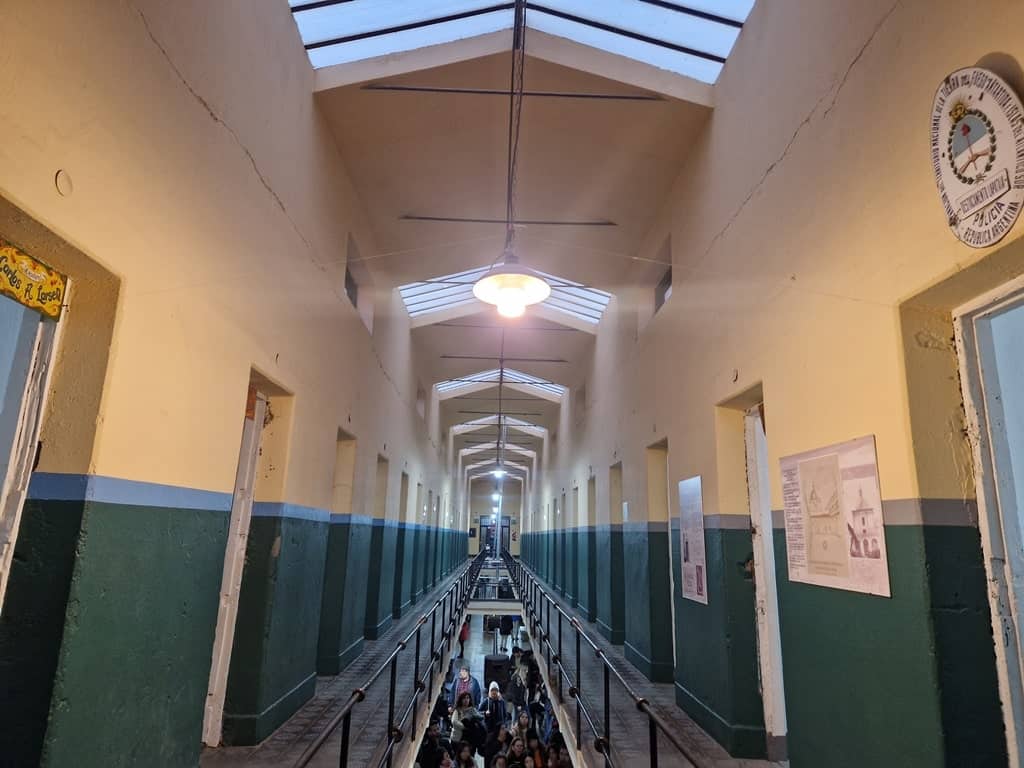
This landmark building was once a formidable place. Built between 1906 to 1920 by prisoners who were shipped in from Isla de los Estados, the prison was once home to the most dangerous convicts in Argentina.
The building was intended for 380 prisoners but up to 800 convicts at a time were held here. Finally closed in 1947, during its time a number of notable inmates did time here including anarchist Simón Radowitzky and the author Ricardo Rojas and anarchist Simón Radowitzky.

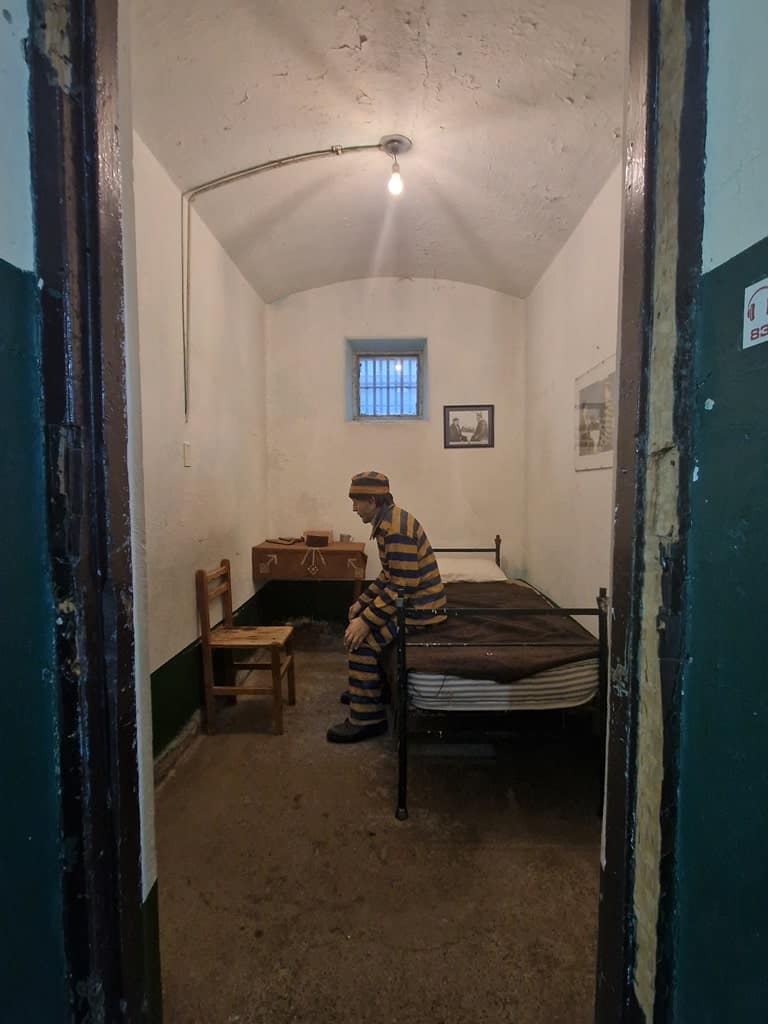
The prison complex is now open for the public to explore the space where a strict routine was enforced. Those who showed good behavior would be given work such as cutting down wood in the nearby forest that was then taken by rail into the city.
Over time, the inmates did much of the work that went towards building the growing city itself. They built roads, public spaces, and bridges. The prison was even the location of the area’s first telephone exchange and printing press.

Taking time to wander the crumbling corridors offers an interesting insight into the early days of the city. Although much of the information is only available in Spanish, there are English-guided tours on offer twice a day.
The Maritime Museum of Ushuaia
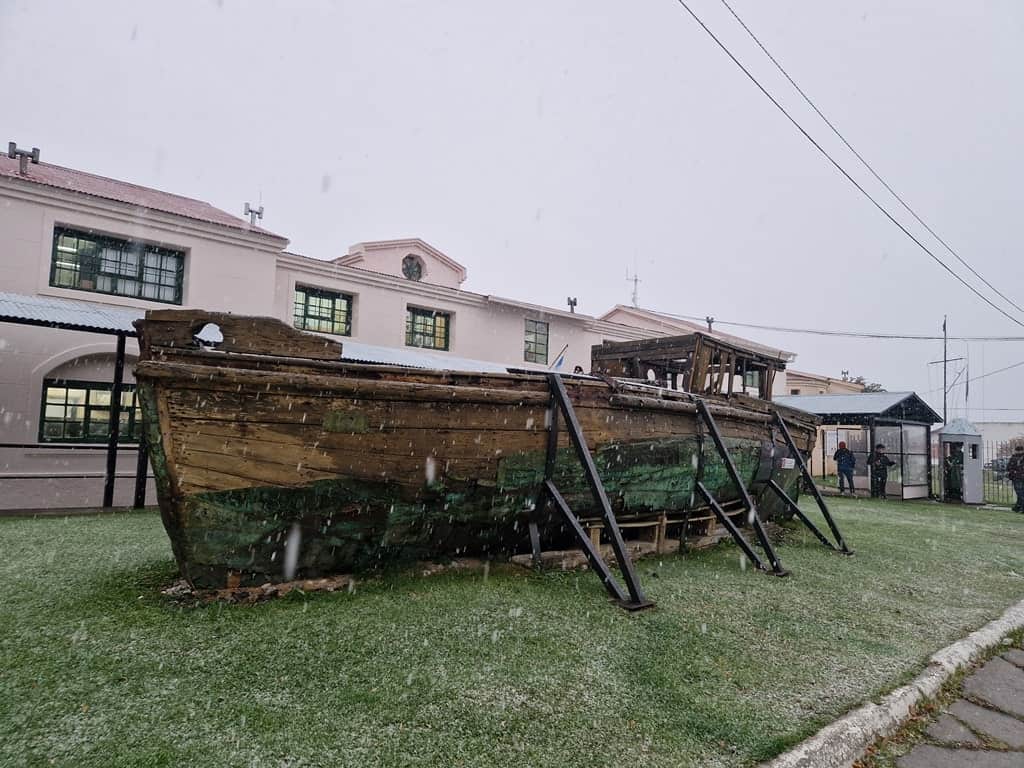
Also located inside the former prison building is the Argentine Navy and the Maritime Museum of Ushuaia. The displays are collections of artifacts that detail the area’s history. Starting with Magellan’s voyage, the museum looks at the customs of the Yagán people, tells stories of the gold prospectors and explores life in the early days of the Patagonian ranches and pioneers.
Tierra del Fuego National Park
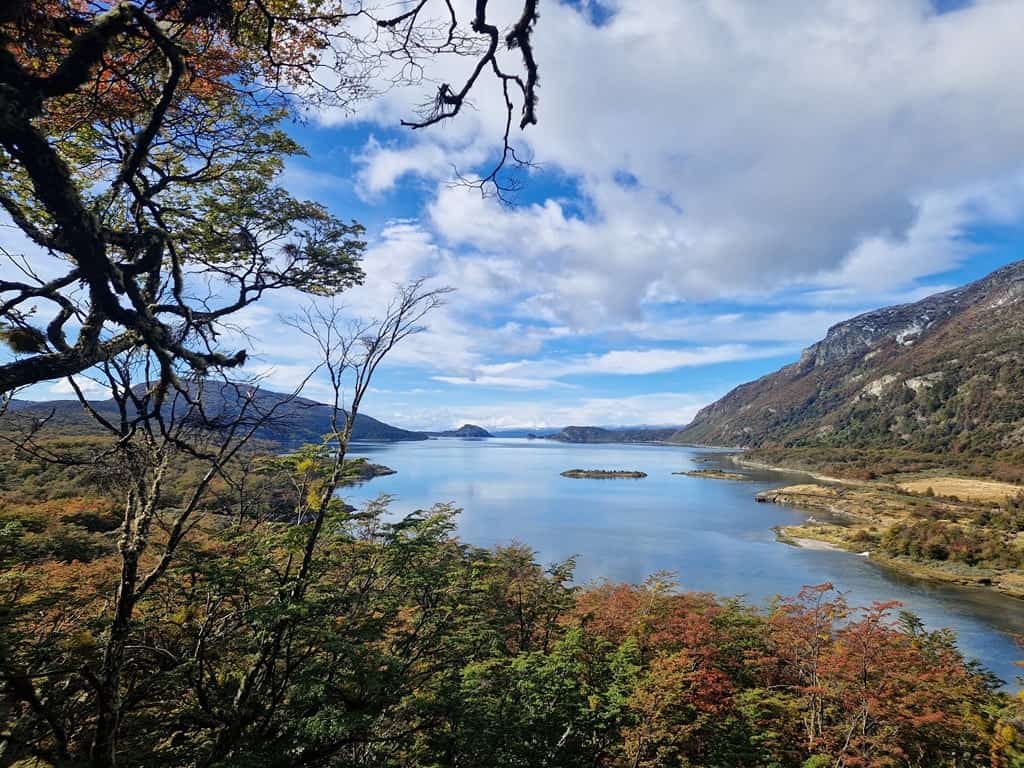
Located to the west of the city, around a 12km drive away, the Parque Nacional Tierra del Fuego offers an enticing day trip. Spanning 630 square kilometers from the calm of the Beagle Channel to the waters of Lago Fagnan, there are surprisingly easy-to-follow trails you can hike here.
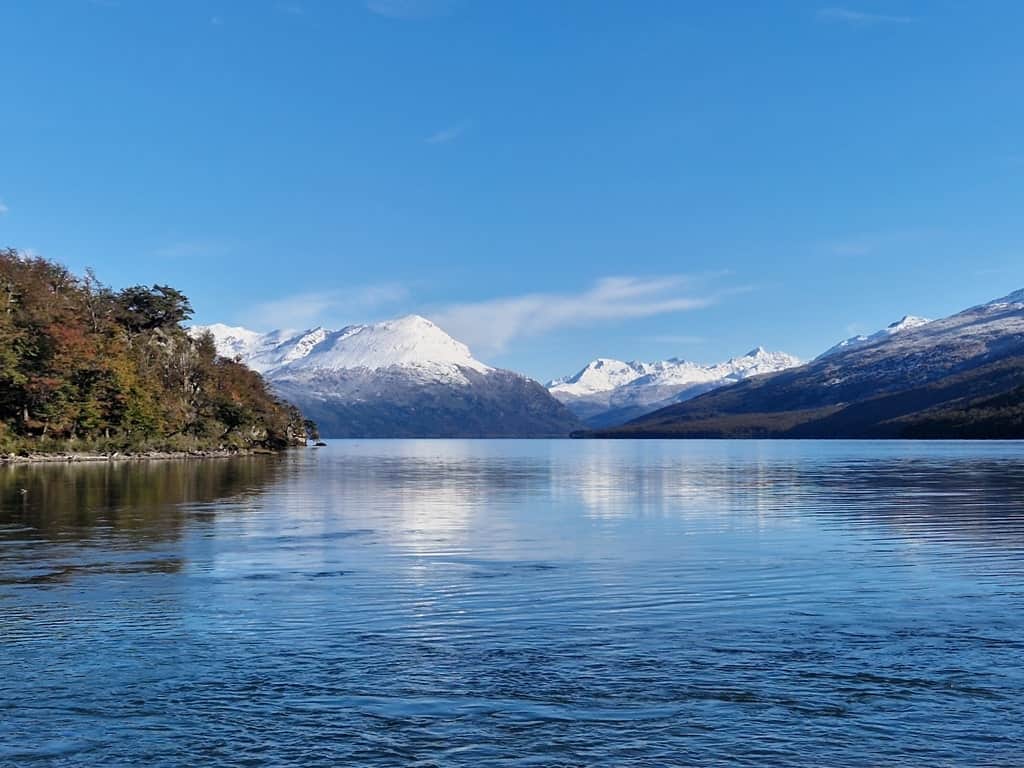
Start at the central visitor’s center in order to pick up maps and some information about the environment and then choose from one of the short trail options. Those looking for something a little more off-grid may have to venture elsewhere as much of the park is off-limits to the public to protect the environment. Don’t let that put you off, however.
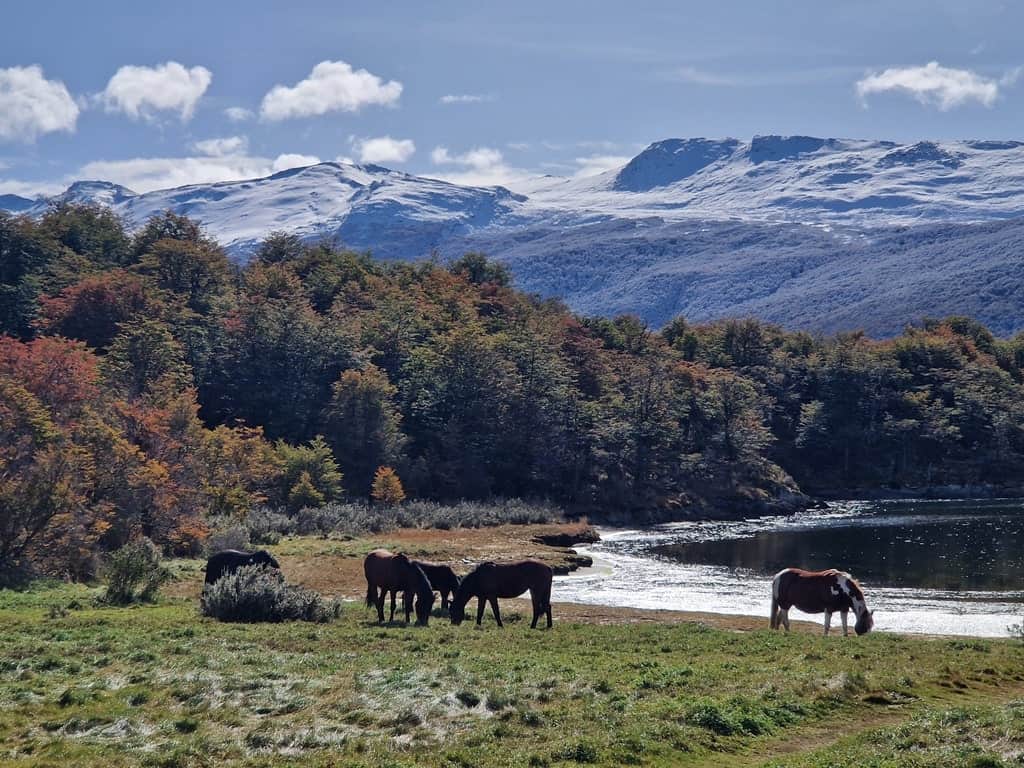
The open trails provide a glimpse into the park’s vast nature and include routes that pass by riversides, weave through evergreen forests, and alongside beautiful bays.
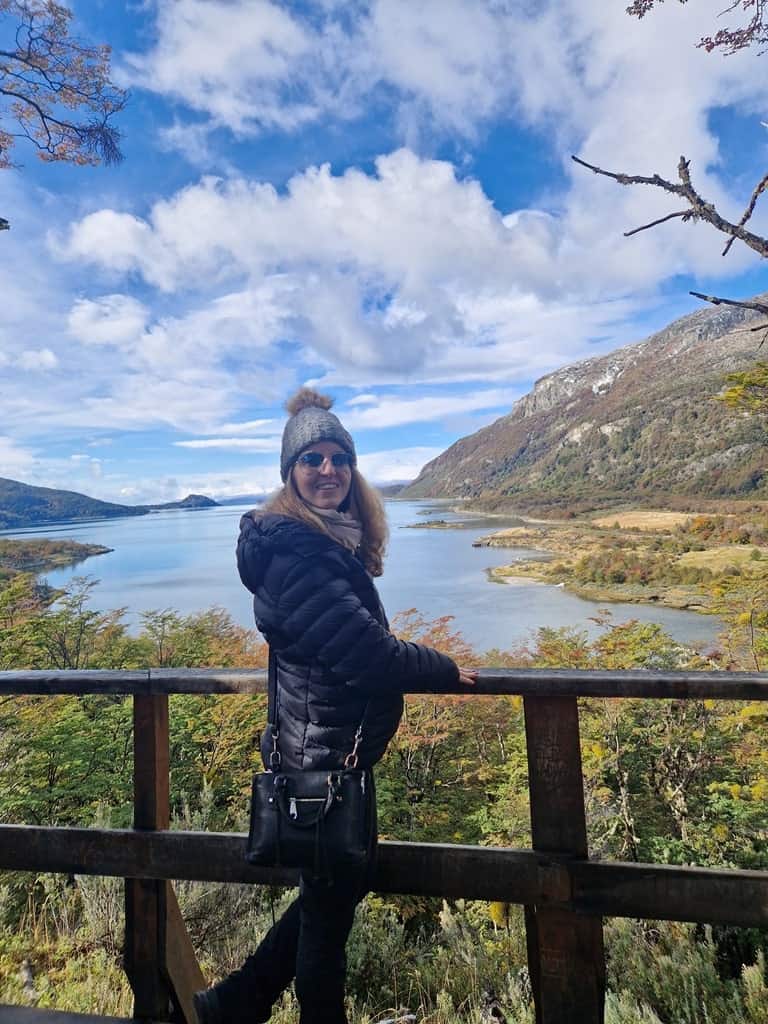
Fans of birdlife should make sure to choose a route that passes through the coastal zone for the change to albatross, condors, and cormorants to name just a few native species.
El Fin del Mundo Tren
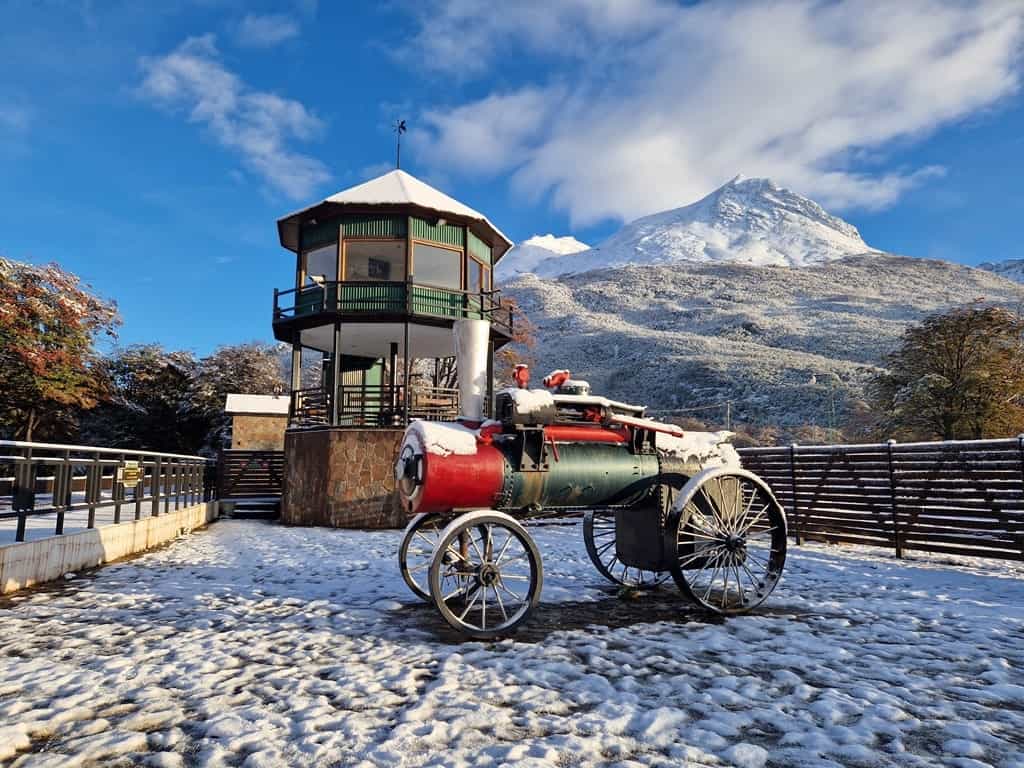
The Fin del Mundo Tren, or End of the World Train, is a historic railway located in the southernmost city in the world, Ushuaia, Argentina. The train operates on a narrow gauge railway that was built in the early 20th century to transport prisoners and supplies to the nearby prison. Today, the train is a major tourist attraction, taking visitors on a scenic journey through the Tierra del Fuego National Park.
The train departs from the End of the World Station, which is located about 7km from Ushuaia. The journey takes about an hour and a half, and the train passes through some of the most stunning landscapes in the area. The train travels along the Pipo River, through forests and over bridges, and past waterfalls and snow-capped mountains.
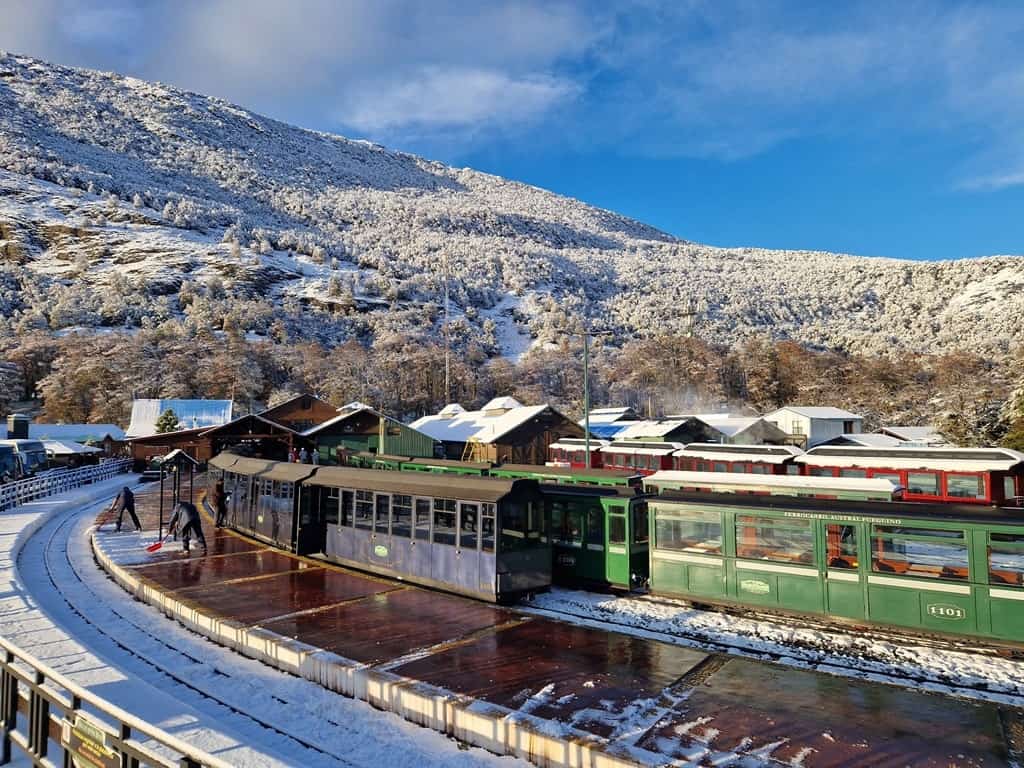
One of the highlights of the journey is the stop at the Cascada de la Macarena waterfall. Here, passengers can disembark and take a short walk to the waterfall, which is surrounded by lush vegetation and provides a great opportunity for photos.
Another stop on the journey is at the National Park Station, where passengers can learn about the history and ecology of the area. The station also features a small museum and gift shop.
The train reaches its final destination at the Tierra del Fuego National Park Station, where passengers can explore the park on foot or by bike. The park is home to a variety of wildlife, including beavers, foxes, and condors, and offers stunning views of the surrounding mountains and lakes.
Estancia Harberton (Harberton Ranch)
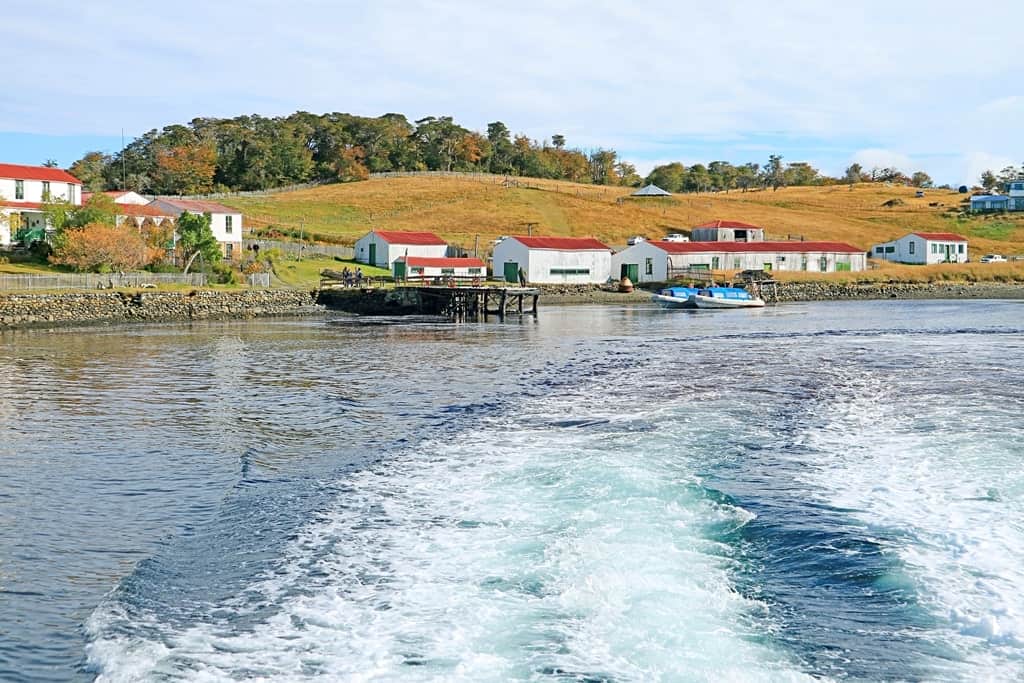
Established in 1886 by missionary and pioneer Thomas Bridges, Estancia Harberton was the first ranch to be built in the area. Bridges stood down from working as a missionary in Ushuaia and began the ranch, naming it after his wife’s hometown Harberton in Devon, England. Aside from running the ranch, Bridges also wrote a dictionary of words from the local Yamana language.
Today the ranch remains open as a museum and provides a glimpse into how the pioneers of the past lived in the remote part of the world. A visit here means joining a tour that takes you through a small nature reserve where you can learn about plants native to the area.
A handful of buildings are made to look like those that the native people used to live in. Elsewhere, shearing sheds hark back to the ranch’s heyday and a natural history museum showcasing bones and fossils of native marine life.
Visiting the ranch offers a glimpse of Ushuaia of the past. Make sure to call in advance to book a place on the tour or arrange the visit through a tour guide.
Martillo Island
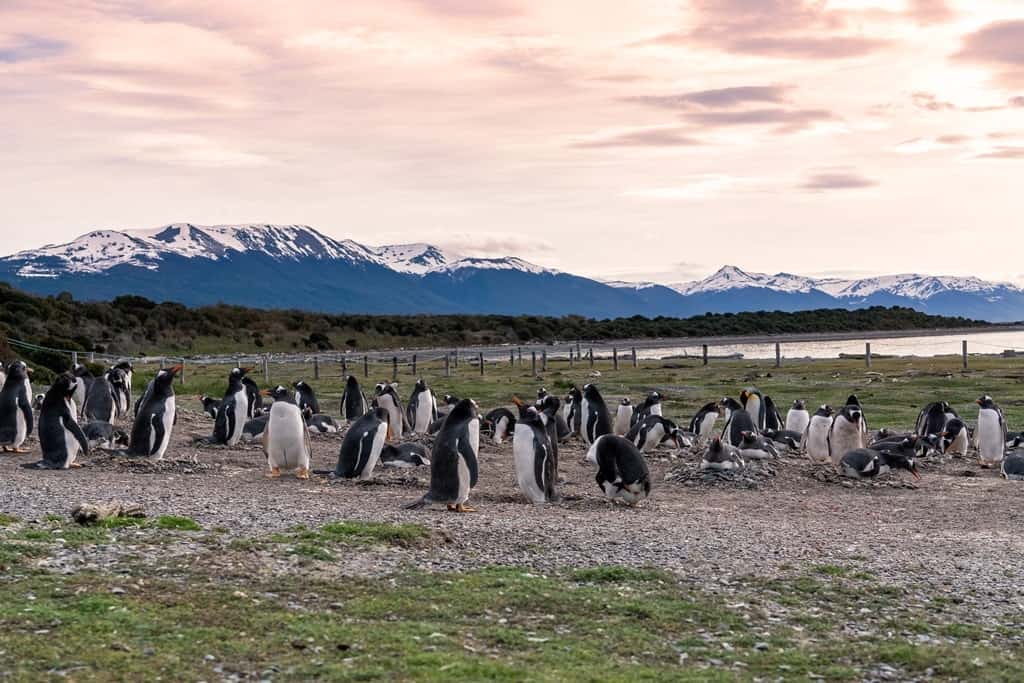
Located in the Beagle Channel close to Ushuaia, Martillo Island or Isla Martillo is home to colonies of penguins. The island is easily reached by a boat tour and offers the chance to see some of the thousands of penguins who flock here every year. There are colonies of rockhopper penguins and gentoo penguins can also be seen along this coast.
The best way to see the penguins on Martillo Island is by taking a tour from Ushuaia, you will be accompanied by a trained naturalist who will be able to provide a whole range of information about the penguins and their habitat.
Antigua Casa Beban
Constructed using materials shipped in from Sweden between 1911 and 1913, Casa Beban is one of the first houses to be built in Ushuaia. Built by Fortunato Beban, rumor has it that Beban actually ordered the structure of the houses from the pages of a Swiss mail-order catalog.
The family donated the house to the local community in the 1980s and it has long since been used as a community hub. Now relocated to its current position along the coast, the restored house plays host to regular art exhibitions and events.
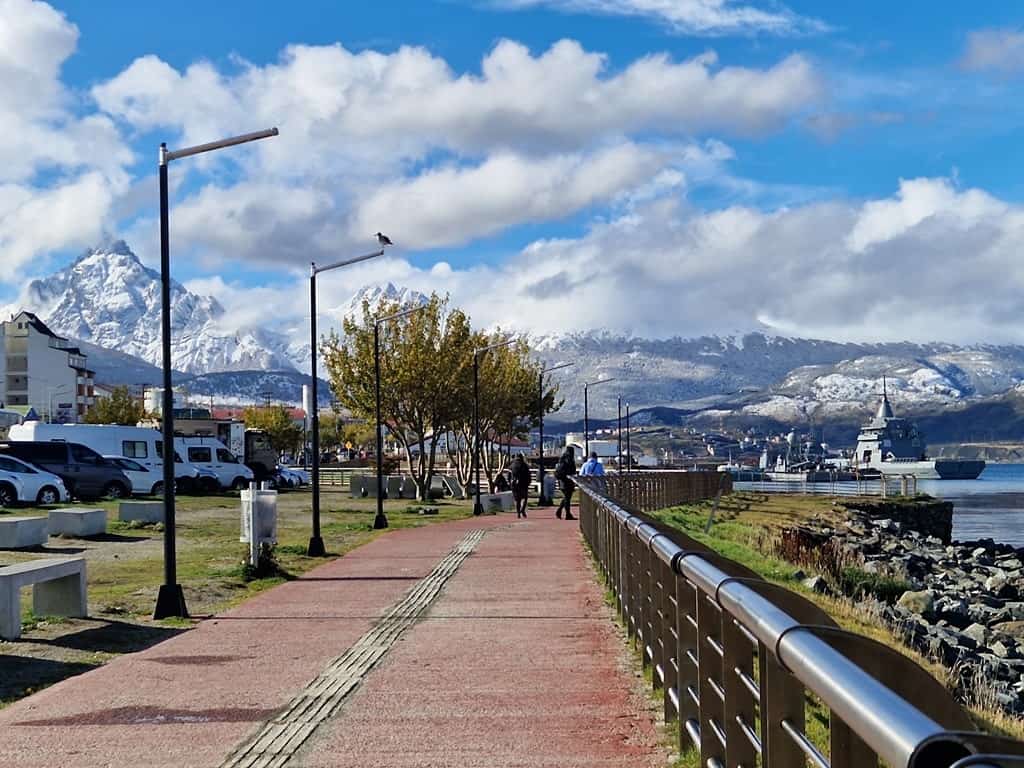
Kalma Resto
For a fancy dinner in Ushuaia, there’s no better place to go than Kalm Resto. Serving up a carefully curated menu of contemporary dishes with a Patagonia flare, owner-chef Jordge bases his recipes on classics his Grandma used to cook him.
The ingredients used are mouth-wateringly fresh and include staples such as crab, octopus ceviche, and Beagle Channel mussels. The wine list has also drawn attention with a hearty selection of Patagonian wine. Take a seat in the sumptuous surroundings and allow the welcoming, yet polished, service to do the work. A real treat.
St. Christopher Shipwreck

The St. Christopher Shipwreck is located off the coast of Ushuaia and holds a rich story waiting to be explored.
The St. Christopher was a cargo vessel that met its unfortunate fate in 1957 when it ran aground during a storm. Today, the remnants of the ship lie partially submerged in shallow waters, creating an eerie and haunting sight for those who dare to venture near.
Parque Yatana
You don’t have to go far in Ushuaia to find nature. This slice of greenery takes up one whole block of the city. The portion of native lenga forest has been kept here, protected from the creep of the surrounding development of the city.
The park’s name Yaghan translates to ‘weave’ and is a reference to the area’s use by indigenous people to practice crafts. There are a number of short walking trails in the park and an art center where the crafts are put on display.
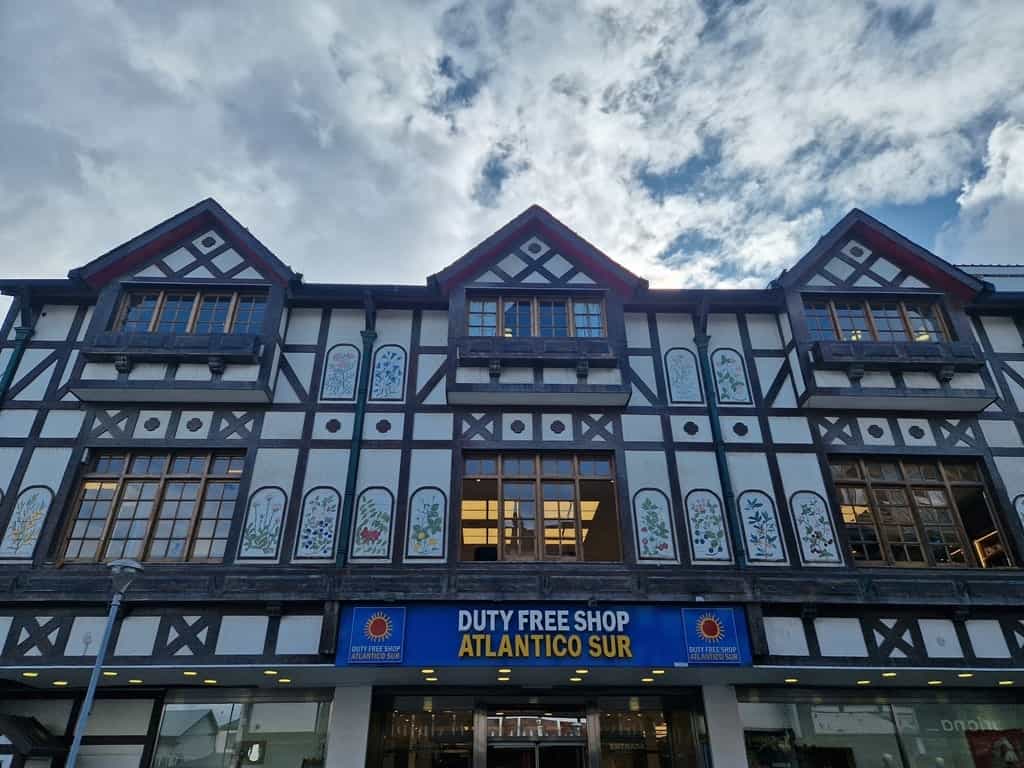
Tante Sara
This is the kind of low-key bistro that you will be pleased you walked into. Frequented by a mix of regular and overseas visitors, the eatery has a hunger-inducing menu of burgers and other warming meals.
Take a seat inside for a filling breakfast to bring your day of outdoor adventures off to a good start, or rock up in the evening for late bites, the kitchen keeps turning out meals until 2 a.m.
Beagle Channel
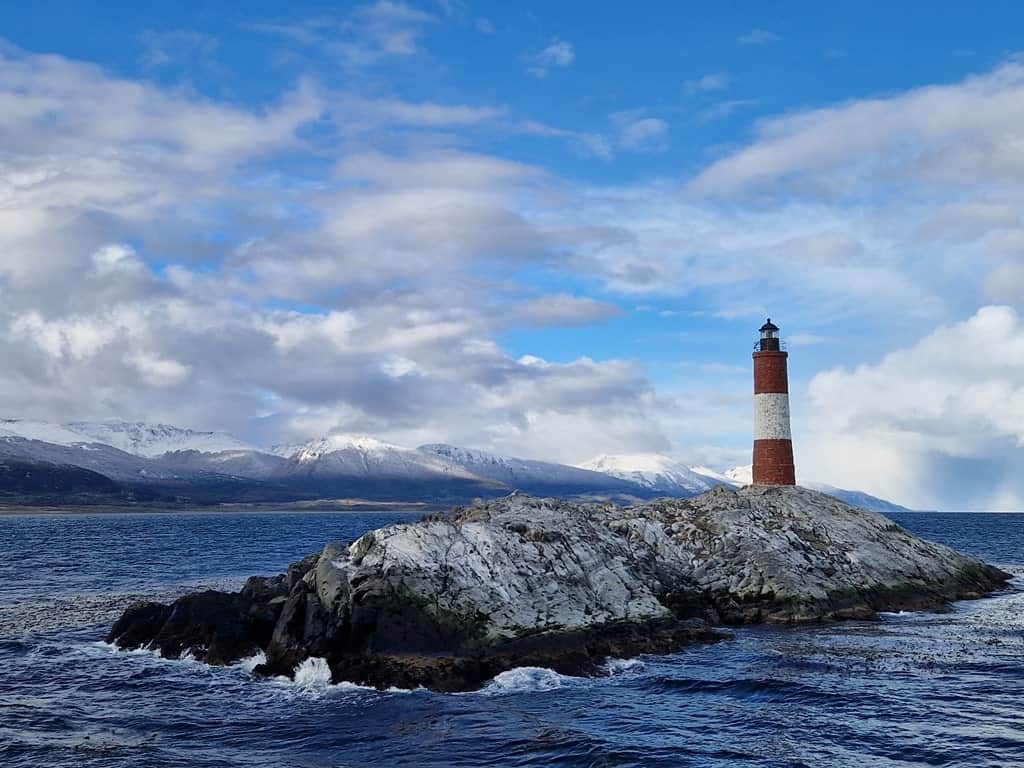
Mark out some time in your Ushuaia itinerary for a boat trip out along the Beagle Channel. The channel is only one of a handful of passes that can be navigated between the Pacific and the Atlantic and as such has played an important role in the fortunes of the regions.

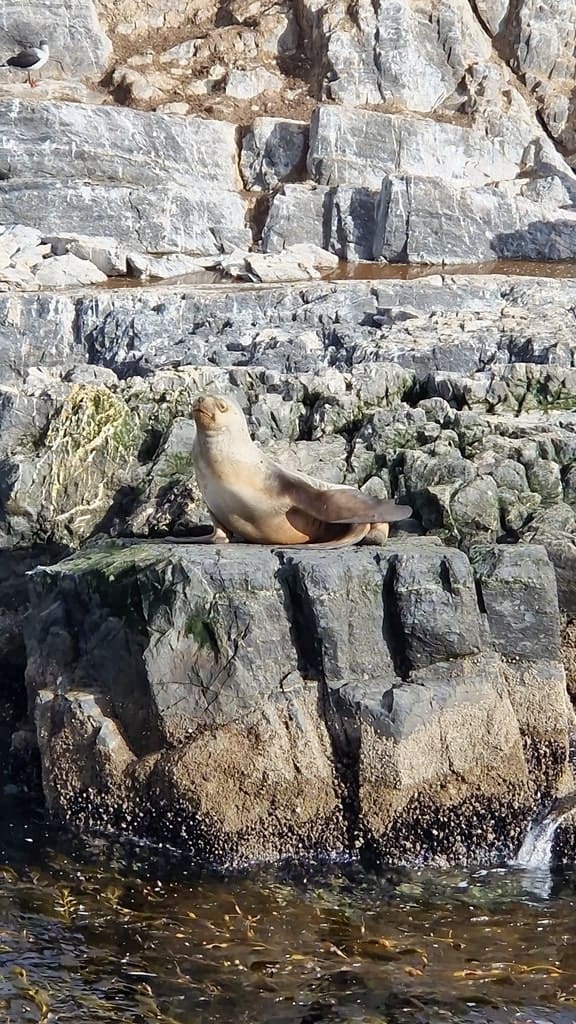
Boat trips leave from Ushuaia and cruise along the channel where you are in for a chance to spot species of whales, sea lions, and penguins.
Martial Glacier
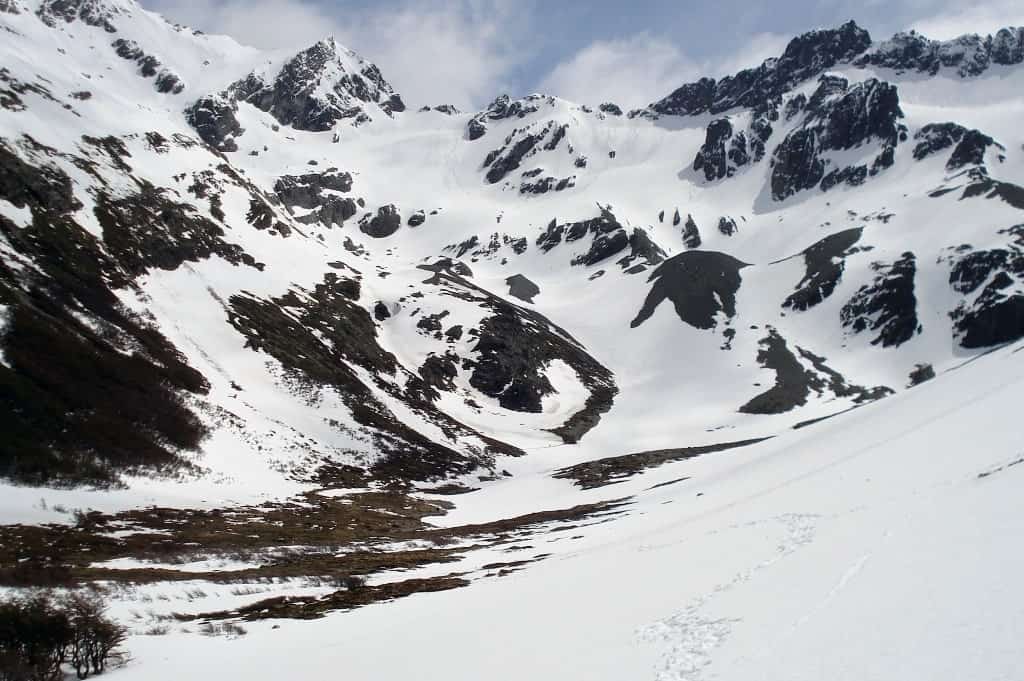
Situated only around 7 kilometers outside of Ushuaia, the Martial Glacier sits within the Martial Glacier Nature Reserve. Here you can ride a chair lift to the top of the glacier and take in views across the region.
In the warmer months, a number of hiking routes take you through the Fuegian forests. Wind up your day here with a visit to La Cabaña, a cozy teahouse with a sunny deck area and a selection of delicious cakes.
María Lola Restó
For delicious Italian-style food overlooking the Beagle Channel, you can’t beat María Lola Restó. Come here for their set lunch meals or delicious dinners and enjoy their signature seafood, king crab and steak in mushroom sauce.
If you want to come here for dinner on a weekend, make sure to make reservations in advance as it’s a popular place.
Quelhue Wine Shop
Looking for the perfect bottle of vino? This local wine shop has an enviable selection of wine sources from across Argentina and further afield. The attentive staff are always on hand to offer advice about what bottle will best suit your needs making it the ideal stop off before a boat trip or picnic.

Boutique del Libro
Spend some time browsing the selection of books on sale at this local bookshop. The shelves are stacked with a choice of books on Patagonia and the Antarctic which is available in both Spanish and English so you can get clued up on your onward adventures.
Paseo de los Artesanos
Situated near the main port, this compact creative marketplace provides the perfect opportunity for picking up some souvenirs to take back home with you. Tucked away inside a tin building that has been colorfully daubed with eye-catching illustrations, the market is made up of almost 50 stalls.
Various artisans sell their wares here with most items made using organic materials and traditional techniques. The market also holds creative workshops where you can learn some of the traditional crafty skills for yourself.
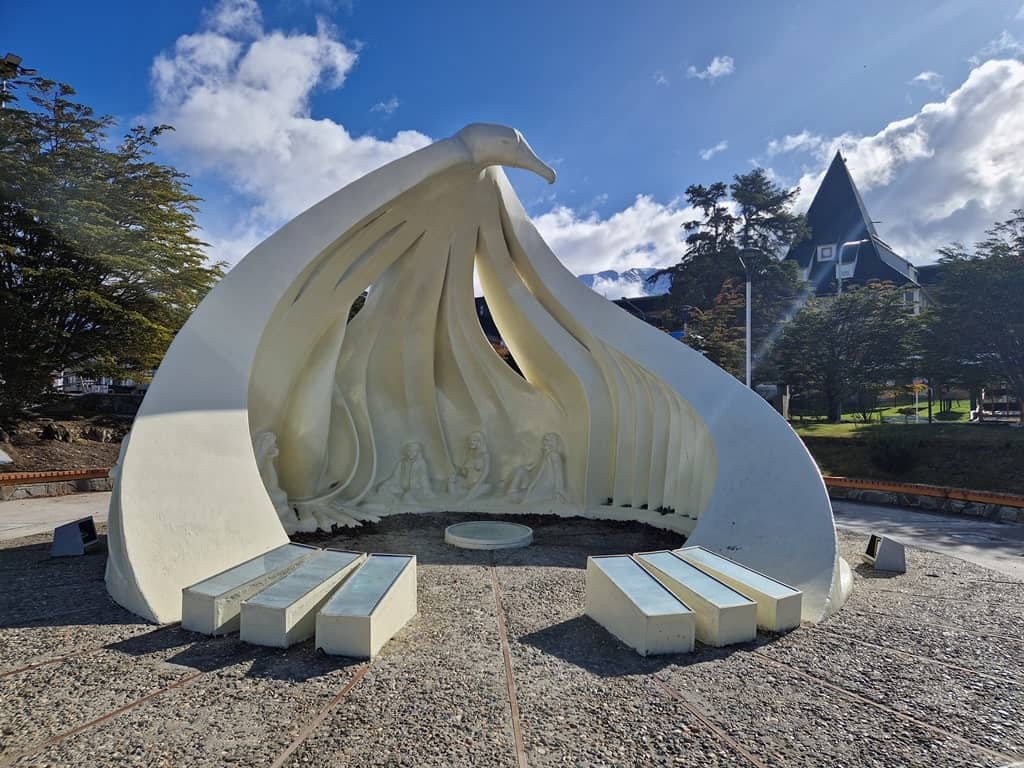
Museo del Fin del Mundo
Making use of the city’s former bank building that was built in 1903 is this municipal museum. Situated within walking distance of the port, the displays in the museum focus on the region’s natural history. Here you can see a variety of bird species, historic photography, and artifacts from the early colony.
Some of the information is available in English and if you want to get a deeper understanding of natural history you can opt for a guided tour.

